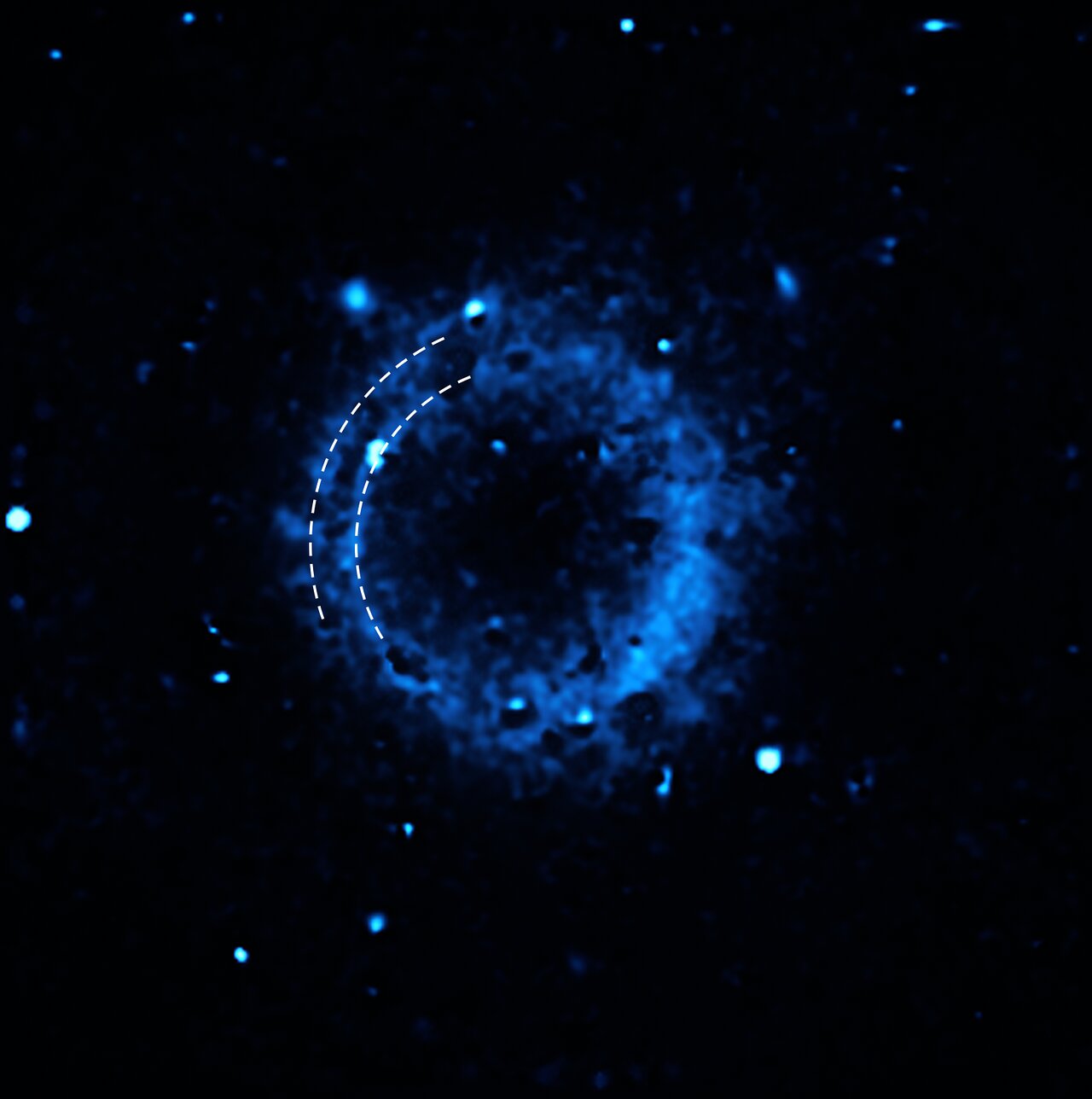In pictures: This is what the remains of a star destroyed by two explosions look like.

Most supernovae result from the explosive deaths of massive stars , but a significant variety comes from a less conspicuous source. White dwarfs, the small, dormant cores left behind after stars like our Sun burn through their core fuel , can produce what the astronomical community calls a Type Ia supernova .
"White dwarf explosions play a crucial role in astronomy," said Priyam Das, a PhD student at the University of New South Wales in Canberra, Australia, who led the study of SNR 0509-67.5, published in Nature Astronomy .
Much of our knowledge about how the universe expands is based on Type Ia supernovae , and they are also the primary source of iron on our planet, including the iron in our blood. "However," the researcher adds, "despite their importance and after so much time, the enigma surrounding the exact mechanism that triggers their explosion remains unsolved."
All models that explain Type Ia supernovae begin with a white dwarf that is part of a pair of stars. If it orbits close enough to the other star, the dwarf can steal material from its companion. In the most established theory of Type Ia supernovae, the white dwarf accretes matter from its companion until it reaches a critical mass , at which point it undergoes a single explosion. However, recent studies have hinted that at least some Type Ia supernovae might be better explained by a double explosion triggered before the star reached this critical mass.
Now, this team has captured a new image that proves their hunch was correct: at least some Type Ia supernovae explode via a "double detonation" mechanism . In this alternative model, the white dwarf is surrounded by a shell of stolen helium, which can become unstable and ignite.

Calcium distribution around the supernova remnant SNR 0509-67.5 Photo: ESO/P. Das et al.
This first explosion generates a shock wave that travels around the white dwarf and into its interior, triggering a second detonation in the star's core, ultimately creating the supernova.
Until now, there has been no clear visual evidence of a white dwarf undergoing a double detonation. Recently, the astronomical community has predicted that this process would create a distinctive pattern or fingerprint in the still-glowing remnants of the supernova, visible long after the initial explosion . Research suggests that the remnants of such a supernova would contain two separate layers of calcium.
The team has found this fingerprint in the remnants of a supernova. Ivo Seitenzahl, who led the observations and was at the Heidelberg Institute for Theoretical Studies in Germany when the study was conducted, says that these results are "a clear indication that white dwarfs can explode long before reaching the famous Chandrasekhar mass limit, and that the 'double detonation' mechanism occurs in nature."

An artist's impression of a double-detonation supernova. Photo: ESO/M. Kornmesser
The team was able to detect these calcium layers (shown in blue in the image) in the supernova remnant SNR 0509-67.5 by observing them with the Multi Unit Spectroscopic Explorer (MUSE) instrument on ESO’s VLT . This provides strong evidence that a Type Ia supernova can occur before its parent white dwarf reaches critical mass.
Type Ia supernovae are key to our understanding of the universe. They behave very consistently, and their predictable brightness (no matter how far away they are) helps the astronomical community measure distances in space. Using them as a cosmic tape measure, the accelerating expansion of the universe was discovered, a discovery that won the Nobel Prize in Physics in 2011. Studying how they explode helps us understand why they have such a predictable brightness.
Das also has another motivation for studying these explosions. "This tangible evidence of a double detonation not only helps solve a long-standing mystery, but also offers a visual spectacle," he says, describing the "beautifully layered structure" that a supernova creates. For him, "revealing the inner workings of such a spectacular cosmic explosion is incredibly rewarding."
With information from the European Southern Observatory
eltiempo





